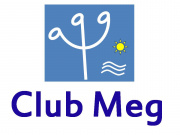MEG:Formations et Animations
__NOTITLE__
Contents
Formations
A venir
Formations passées
Formation Connectivité avec Fieldtrip 21-22 novembre 2016 File:Fiche annonce - Connectivité en MEG et EEG - 2016.pdf
Programme de la formation et tutoriaux
Formation Fieldtrip 11-13 janvier 2016
Programme de la formation et tutoriaux
Le Club MEG
Prochaines réunions
Précédentes réunions
Mardi 5 Mai 2016 14h
ANYWAVE: a software for visualizing and processing EEG/SEEG/MEG/xMG data - Bruno Colombet. Institut de Neuroscience des Systèmes (INS-Marseille)
Mardi 5 Avril 2016 14h
The sources of sequential modulations of control processes in arithmetic strategies: A MEG study - Thomas Hinault. Laboratoire de Psychologie Cognitive (LPC-Marseille)
In a wide variety of cognitive domains, cognitive performance is determined by which strategies participants use and how they execute these strategies on current problems. We used magnetoencephalography to identify the brain regions and specific time course of dynamic modulations of executive control processes during strategy execution. Participants performed a computational estimation task in which they were instructed to execute a poorer or a better strategy to estimate results of two-digit multiplication problems. When participants were asked to execute poorer strategies, results revealed two distinct patterns of brain activations, depending on whether the poorer strategy (left inferior frontal junction) or the better strategy (anterior cingulate cortex) was executed on the immediately preceding items. Such differences may be the result of proactive preparation on items following poorer strategy items and reactive adjustments following better strategy items. Of genuine interest, the present findings specify the time course of activations of crucial brain areas for sequential modulations of executive control during arithmetic strategy execution.
Mardi 1 mars 2016 14h
The neurophysiology of proactive and reactive action inhibition - Stefania Ficarella. Laboratoire de Neurosciences Cognitives (LNC-Marseille)
Action inhibition is often treated as a unitary concept, but recent studies (Aron et al., 2011; Swick et al., 2011) have shown that different brain circuits are involved in different types of action inhibition (for a review see Ridderinkhof, 2014). Particularly, some research groups have investigated the distinction between selective and global action inhibition (Majid et al., 2012) while others have focused on the distinction between proactive and reactive action inhibition (Cai et al., 2011). In this study we aim at investigating, in the same participants, the neurophysiological underpinnings of global and selective, proactive and reactive action inhibition. To do so, we created a Cued Go/NoGo Simon task that, coupled with Electromyographic (EMG) recordinngs of the muscles involved in the responses, informs us on the levels of (selective and global) motor preparation. We will present preliminary behavioral results and expected MEG results.
References:
- Aron, A. R. (2011). From reactive to proactive and selective control: developing a richer model for stopping inappropriate responses. Biological Psychiatry, 69 (12), e55–68.
- Cai, W., Oldenkamp, C. L., & Aron, A. R. (2011). A proactive mechanism for selective suppression of response tendencies. The Journal of Neuroscience, 31(16), 5965–9.
- Majid, D.S.A., Cai, W., George, J.S., Verbruggen, F., Aron, A.R. (2012) Transcranial magnetic stimulation reveals dissociable mechanisms for global versus selective cortico-motor suppression underlying the stopping of action. Cerebral Cortex 22:363–371.
- Ridderinkhof, K.R., van den Wildenberg, W.P.M., Brass, M. (2014) “Don׳t” versus “Won׳t”: Principles, mechanisms, and intention in action inhibition.
Neuropsychologia 65:255–262.
- Swick, D., Ashley, V., & Turken, U. (2011). Are the neural correlates of stopping and not going identical? Quantitative meta-analysis of two response inhibition tasks.
NeuroImage, 56(3), 1655–65.
Mardi 26 Janvier 2016 14h
ANOVA II: Analyse multifactorielle des données MEG/EEG - Bernard Giusiano. INS
A partir d’un exemple d’expérience impliquant deux groupes et deux conditions, nous montreront comment faire l’équivalent d’une ANOVA sans analyse de variance dans Fieldtrip avec des méthodes non paramétriques utilisant les permutations. L’extension à plus de deux groupes et/ou plus de deux conditions sera expliquée en suivant la démarche de l’analyse de variance. Les limites des tests par permutation pour les analyses de variance multifactorielles seront évoquées. Les scripts Matlab/Fieldtrip sont disponibles ici.
Media:ANOVA_II_160126.pdf
Mardi 17 novembre 2015 14h
ANOVA I: B A BA de l’ANOVA - Bernard Giusiano. INS
Entre les tests de comparaison deux à deux et les méthodes de régression, à quoi sert l’analyse de variance (ANalysis Of VAriance) ? Nous vous proposons une introduction pour non statisticiens qui démarre avec un rappel intuitif du principe des tests statistiques et qui démystifie les principaux concepts attachés à ce type d’analyse (facteur, inter groupe, intra groupe, interaction, répété, fixé, aléatoire, emboîté, conditions d’application, …). Bien que non appliquée spécialement aux données MEG/EEG, cette présentation permet de comprendre la présentation suivante sur l’analyse multifactorielle des données MEG/EEG.
Media:B_A_BA_de_l_ANOVA_151117.pdf
